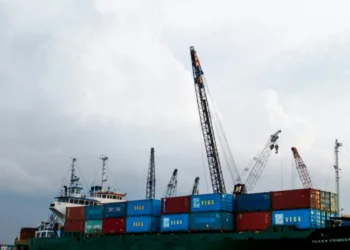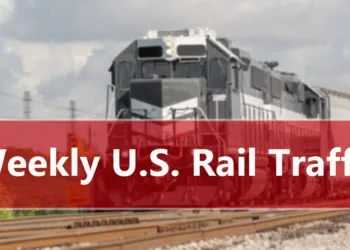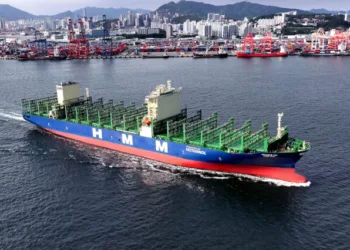The outlook for the second half of 2025 in the global container shipping market is shaping up to be a disappointing one, with weak demand, overcapacity, and trade policy turbulence leading liners to rethink their full-year financial outlook. Today saw Japan’s Ocean Network Express revise downwards its projections for the full fiscal year, other lines are likely to follow suit.
Analysts at Jefferies summarised the current mood with their latest container report titled “The unexciting place between not good and not bad,” capturing the market’s inertia. Despite some early summer rate spikes, sentiment has softened significantly, and the industry is bracing for a subdued peak season.
Linerlytica warns that the cascading effects of US tariff policies are starting to bite, with container volumes now under pressure. The recently announced US-EU trade deal, which includes a 15% tariff on European goods, is expected to hit transatlantic volumes particularly hard. Imports from Europe to the US grew 8% in H1 2025, but this momentum is forecast to reverse in H2, with Jefferies projecting a 10% decline. Meanwhile, capacity on the transatlantic route remains 16% higher than a year ago, raising concerns of significant overcapacity if demand falters as predicted.
Freight indices reflect the gloom. The Shanghai Containerized Freight Index (SCFI) has dropped for eight consecutive weeks, down another 42 points today, with carriers’ planned August rate increases failing to stick amid a supply-demand imbalance.
ONE, the world’s sixth largest liner, released its Q1 results today, slashing $400m off its full year forecast with CEO Jeremy Nixon citing ongoing geopolitical and economic challenges.
“Our full year forecast is likely to face headwinds from continued geopolitical uncertainties and evolving market conditions in key economies and port congestion that impact global supply chains,” Nixon said.
According to Sea-Intelligence, early June’s short-lived rate rally has faded, and the much-anticipated peak season may be absent altogether. In a worst-case scenario, August volumes could plunge as much as 26% year-on-year, triggering more blank sailings and downward rate pressure.
Even if a short, urgent surge materialises in late September—driven by US importers scrambling to ship goods ahead of China’s Golden Week—analysts warn this would be a temporary blip. “We may see another spike in rates like June, followed by another steep drop,” Sea-Intelligence noted.
Spot rate trends echo this volatility. Lars Jensen of Vespucci Maritime highlighted earlier this week that transpacific rates to the US west coast, which spiked by over $3,000 per feu in June, have now fully unwound, returning to pre-spike levels.






















